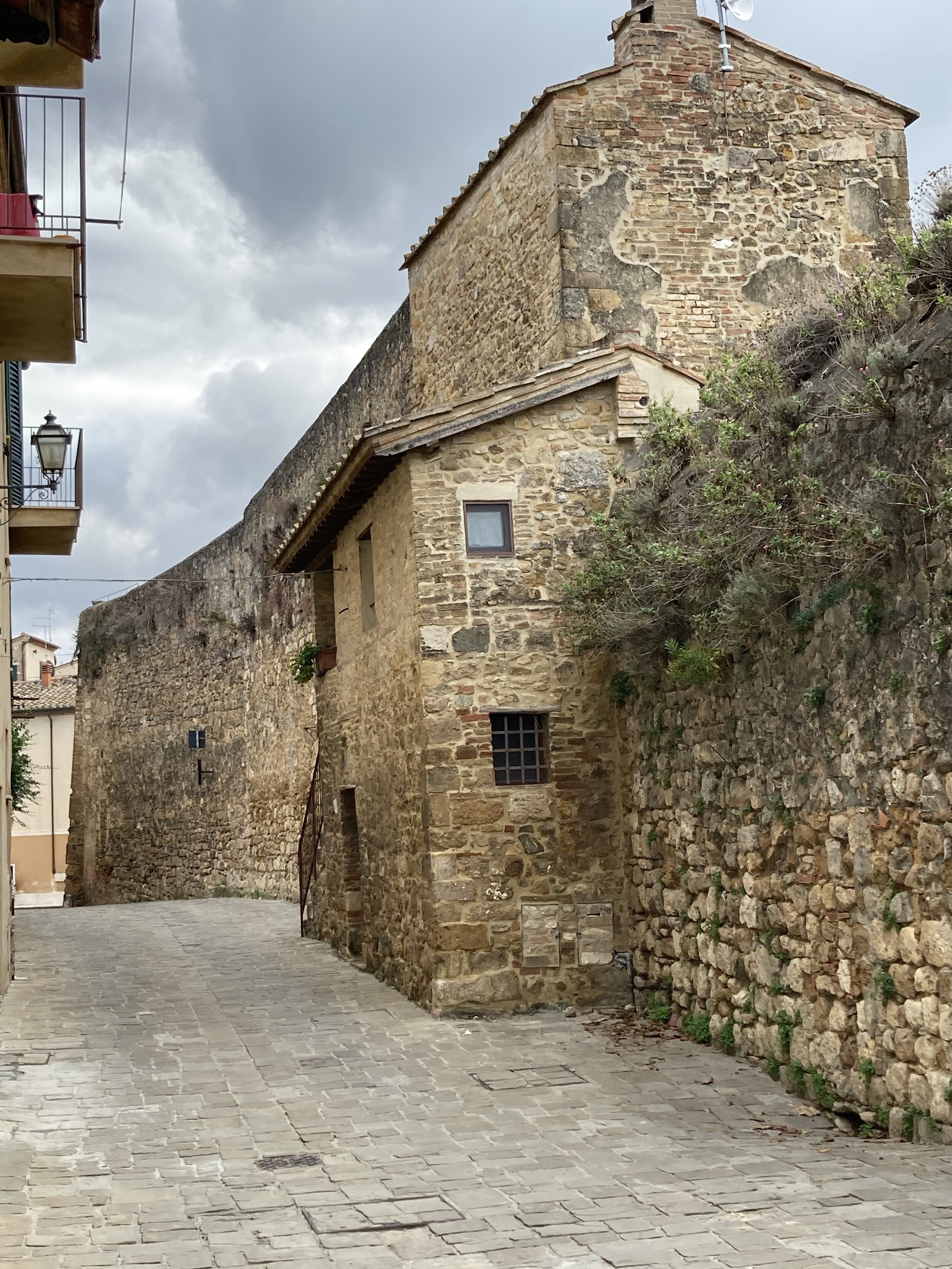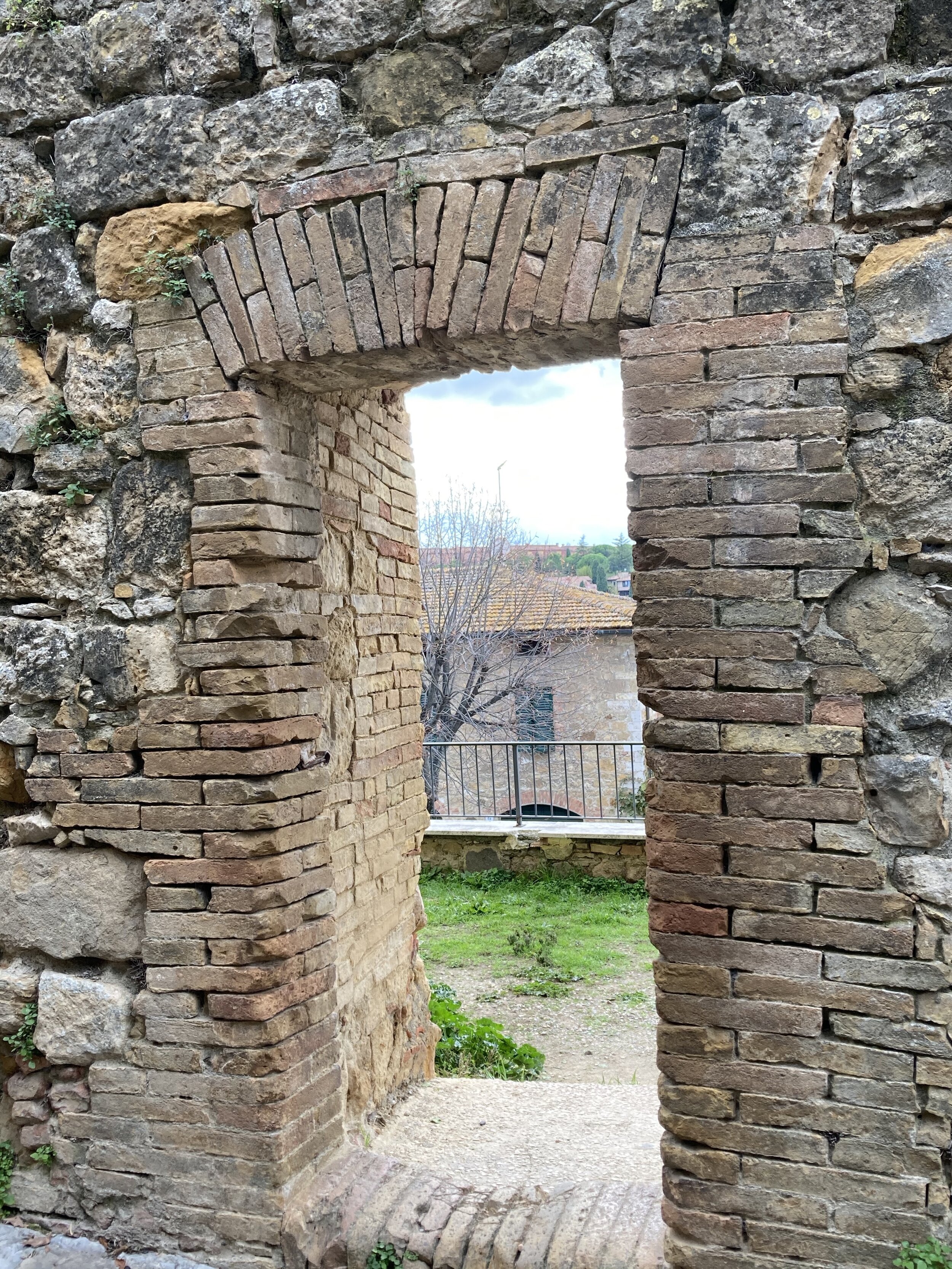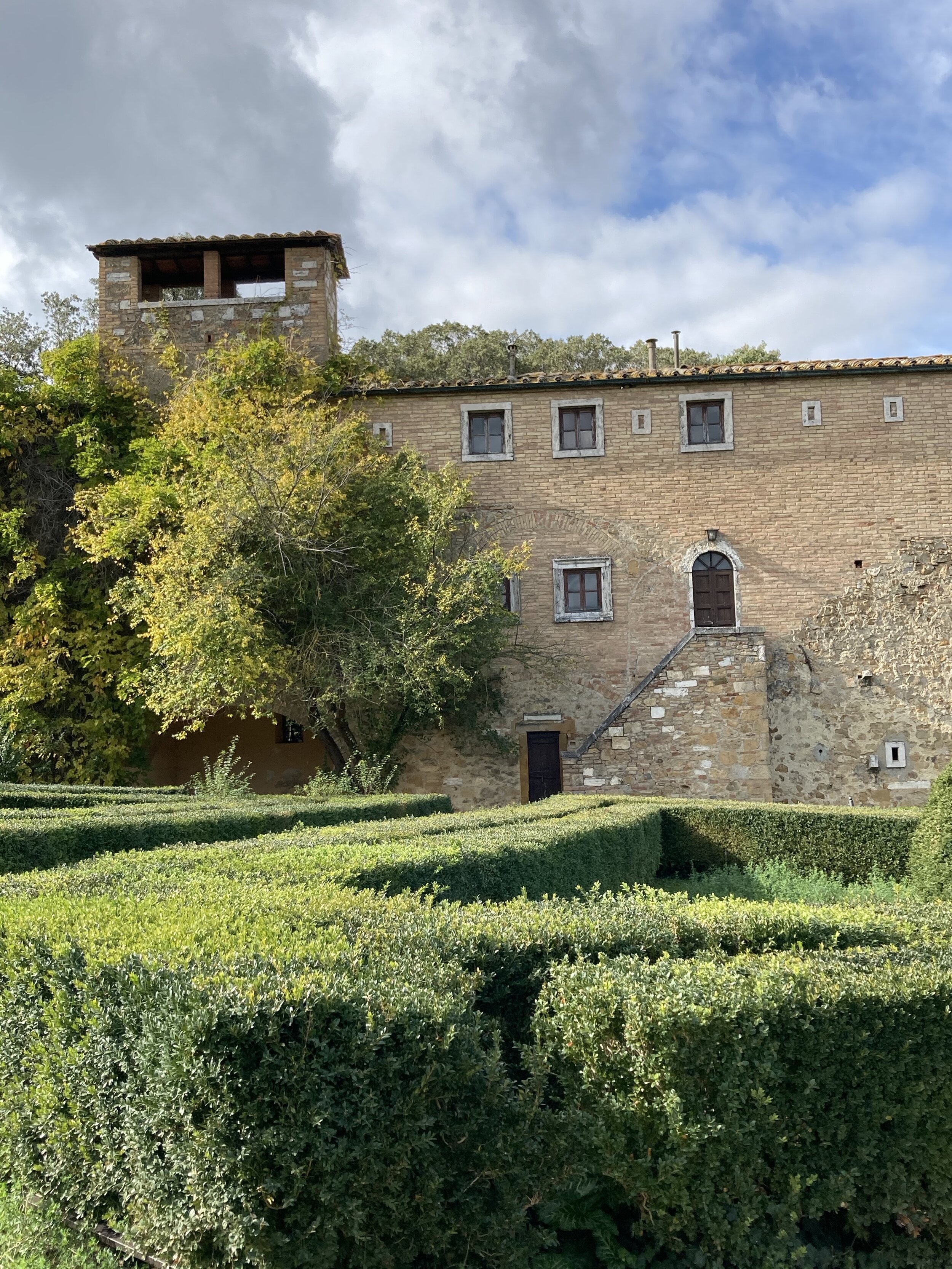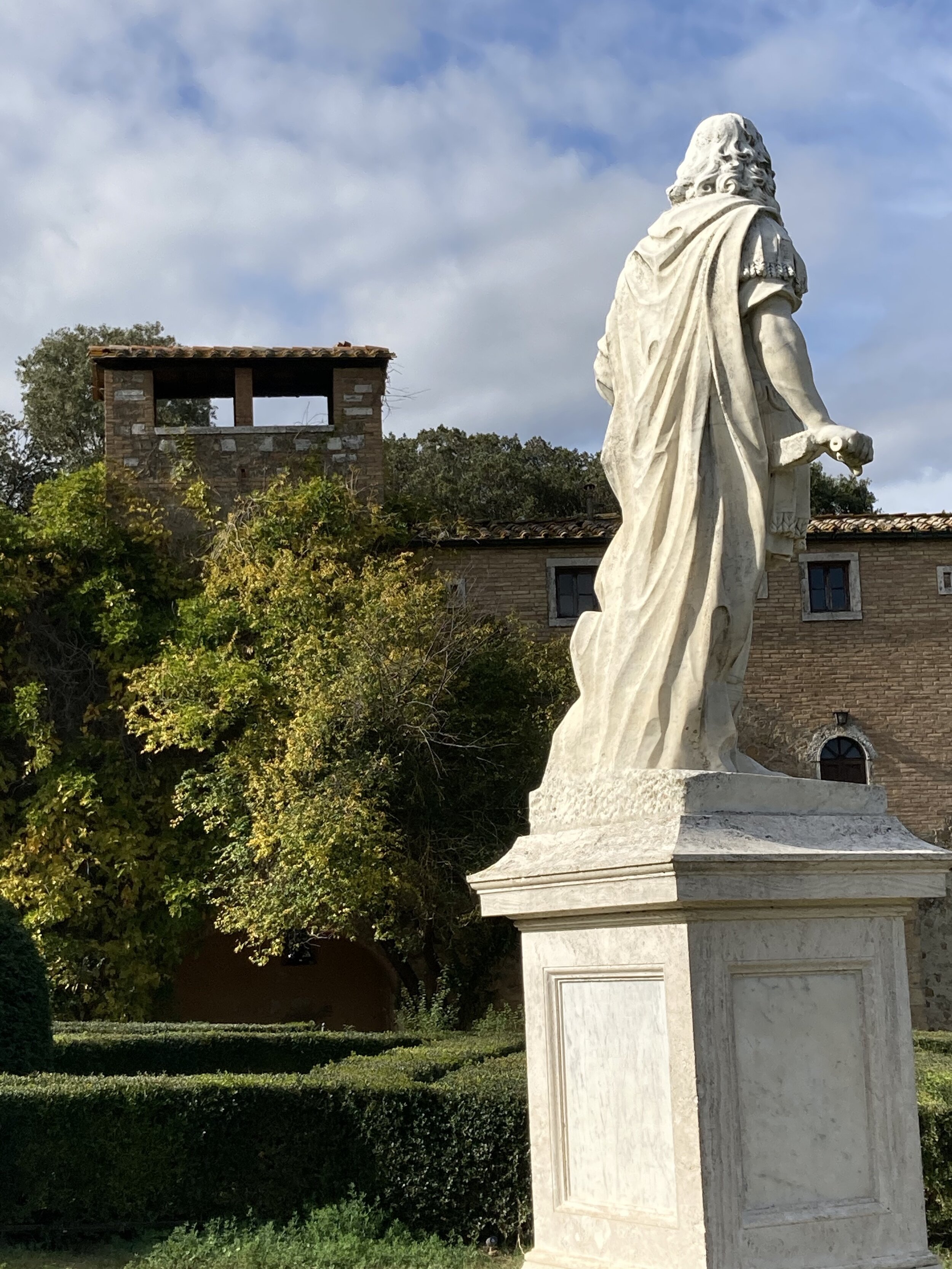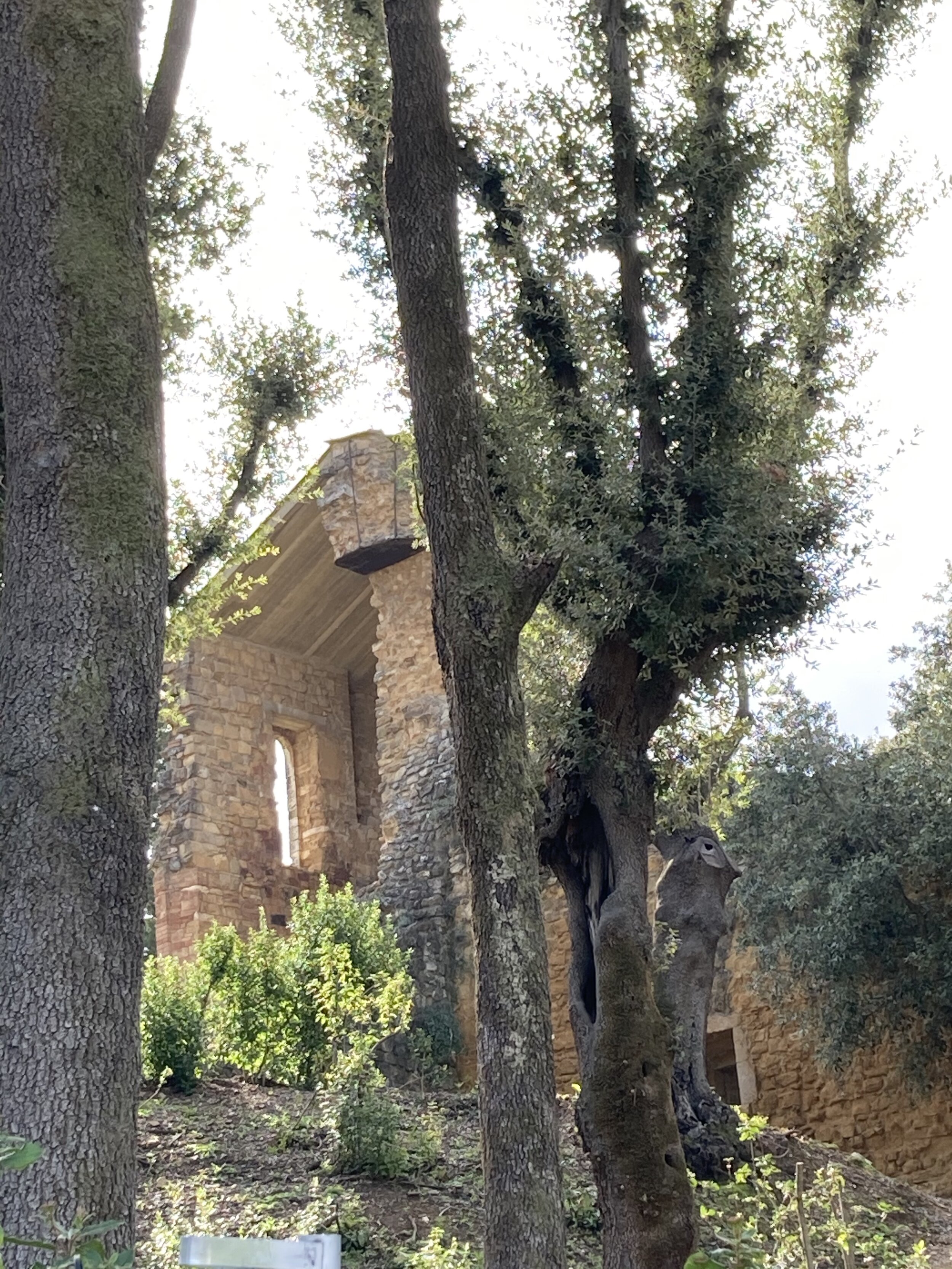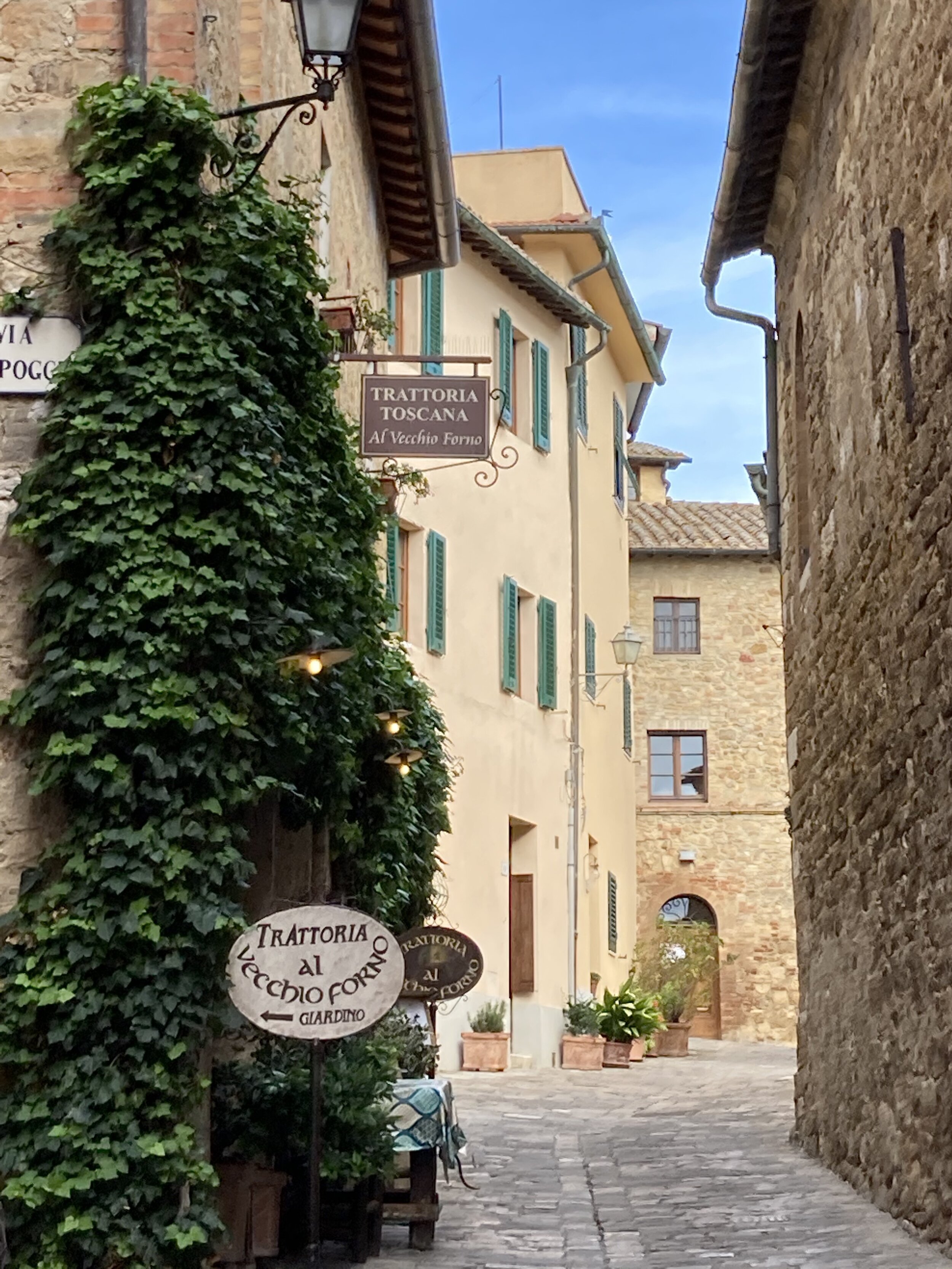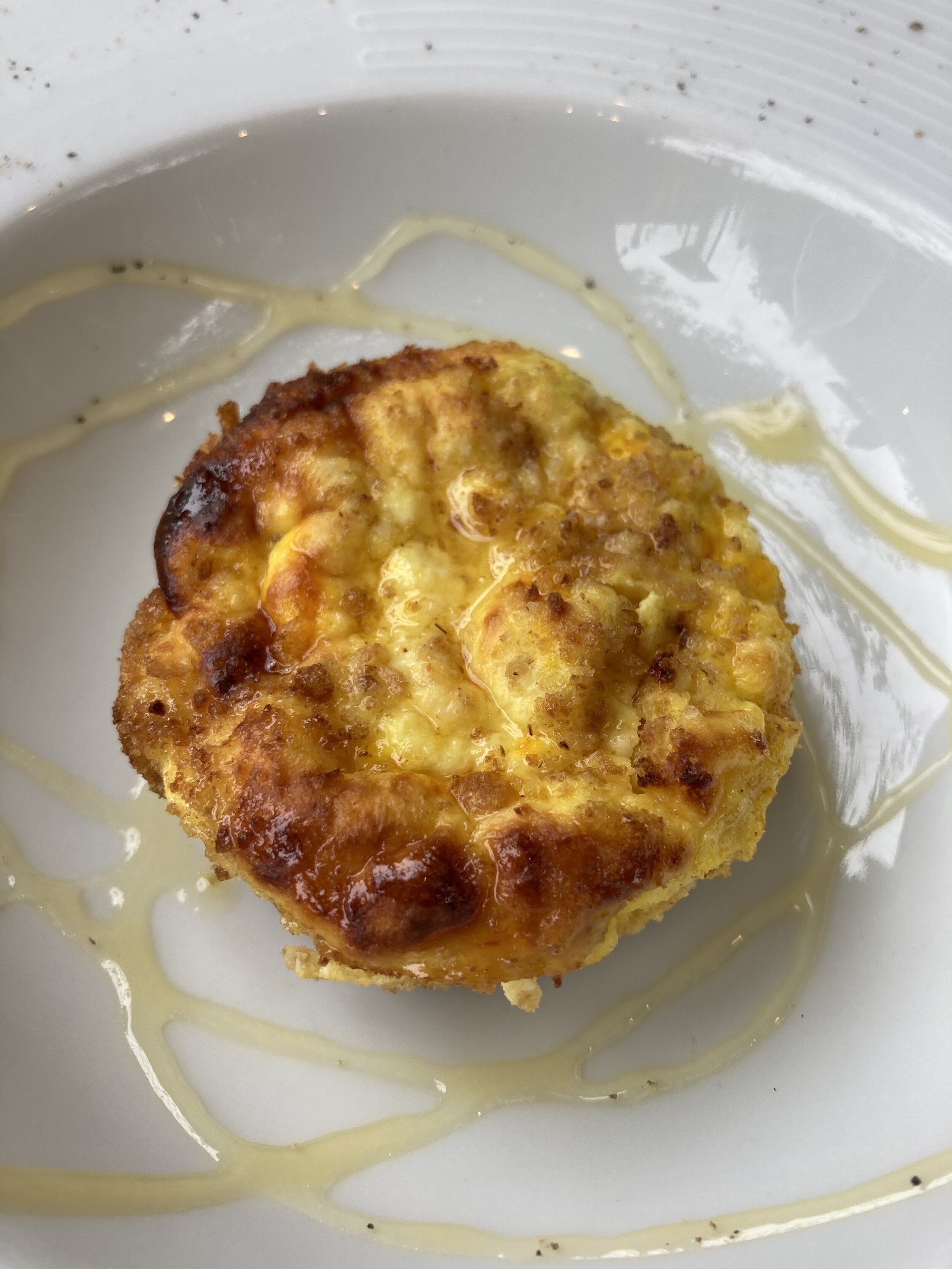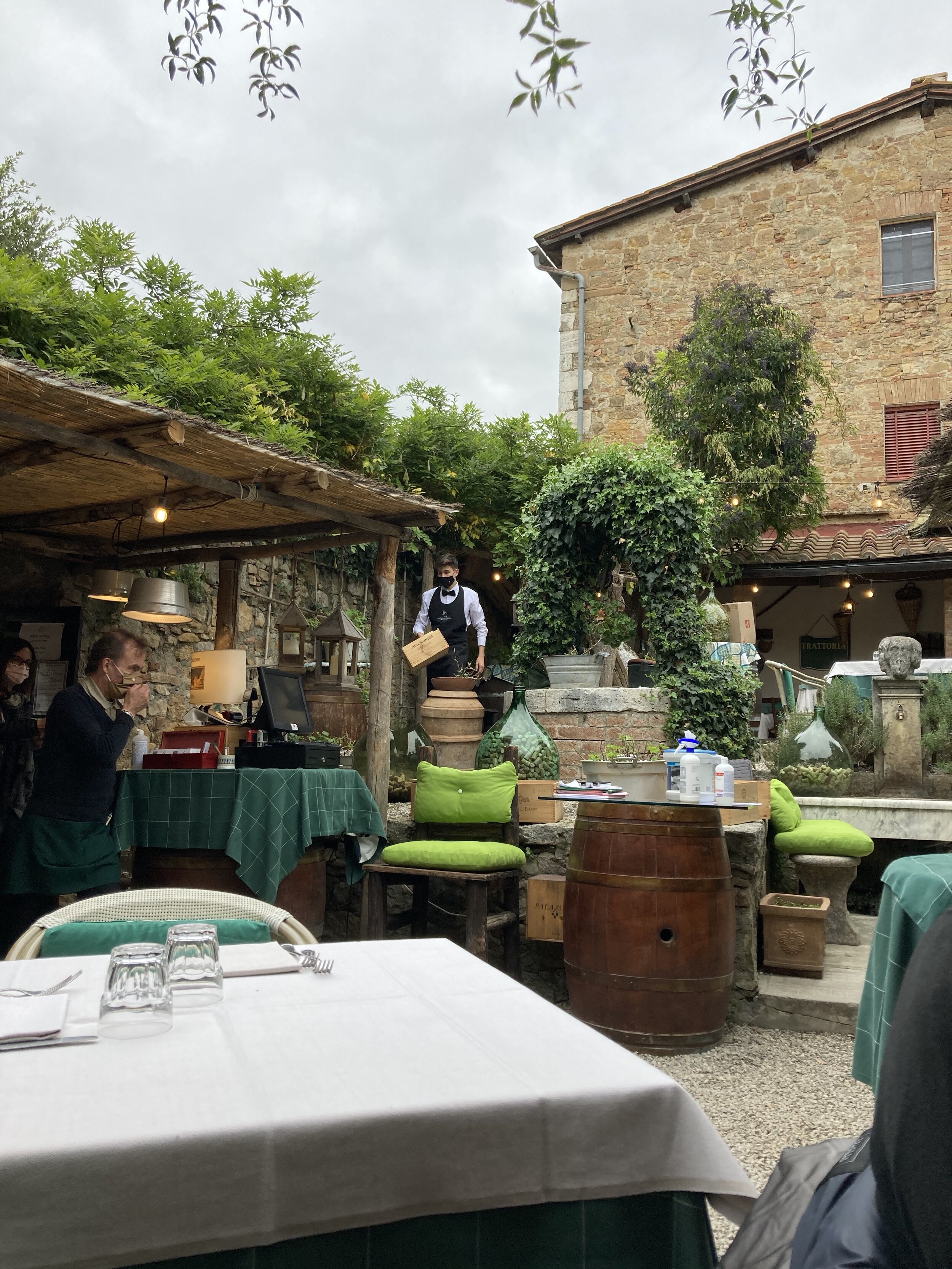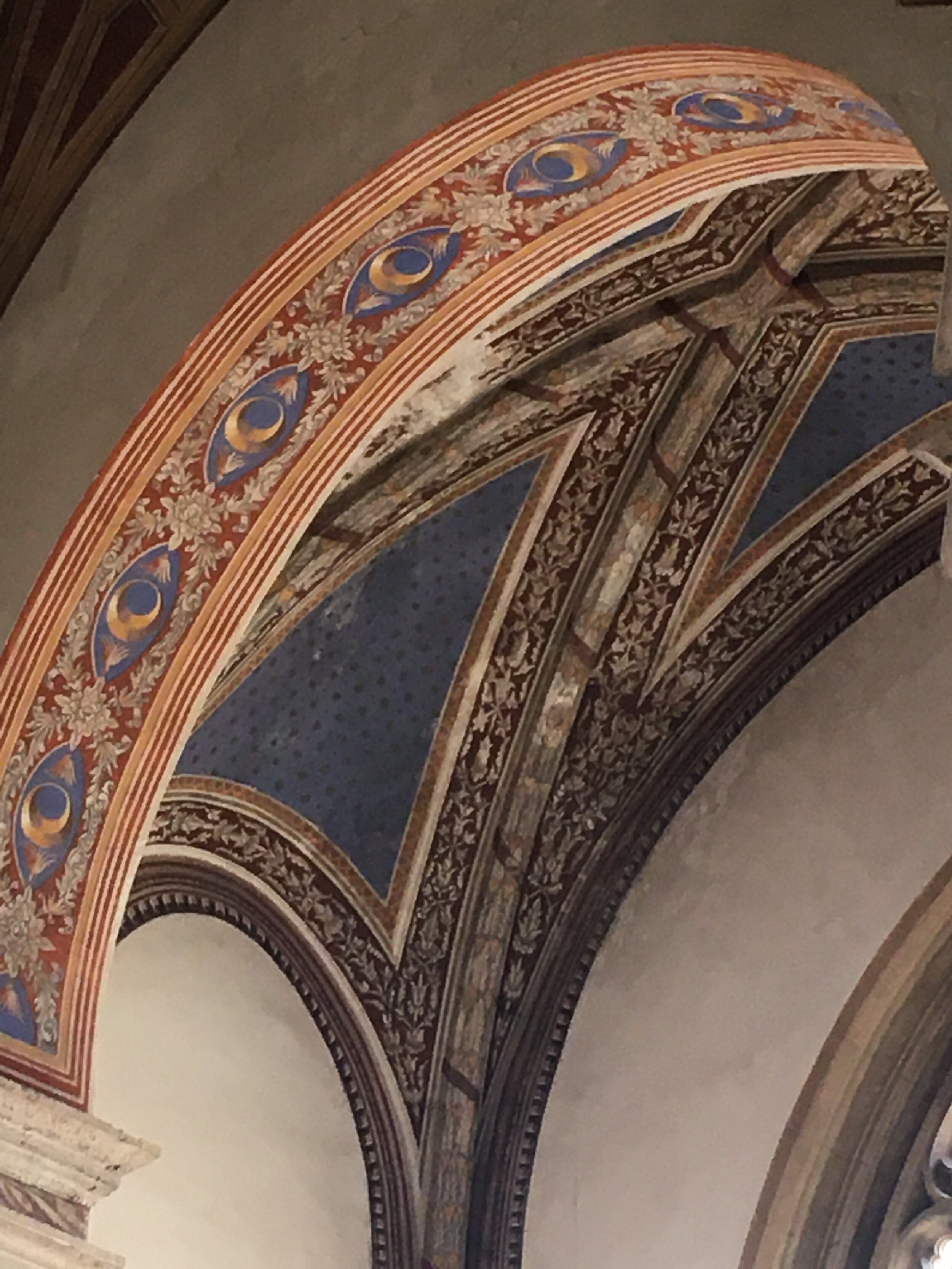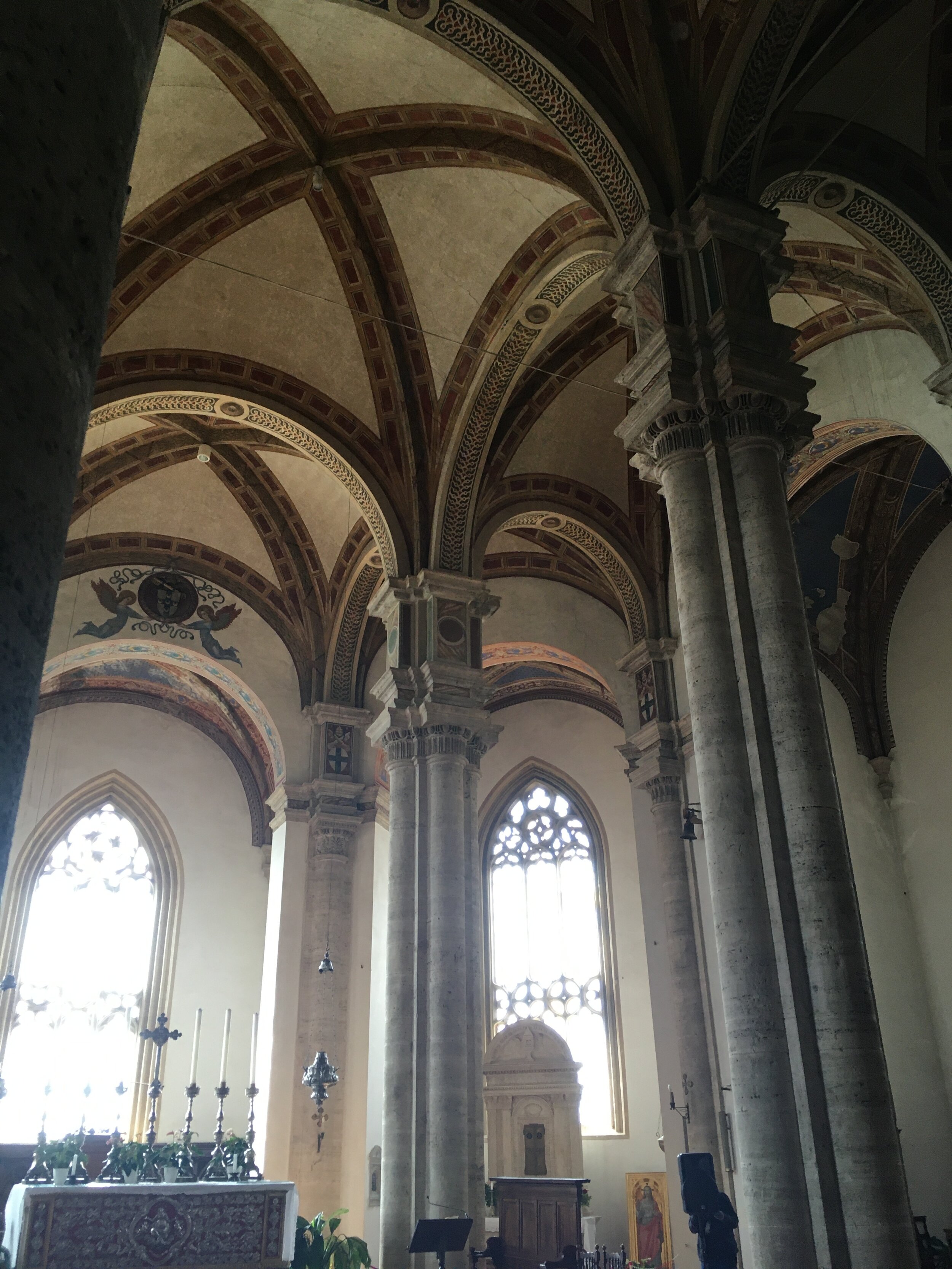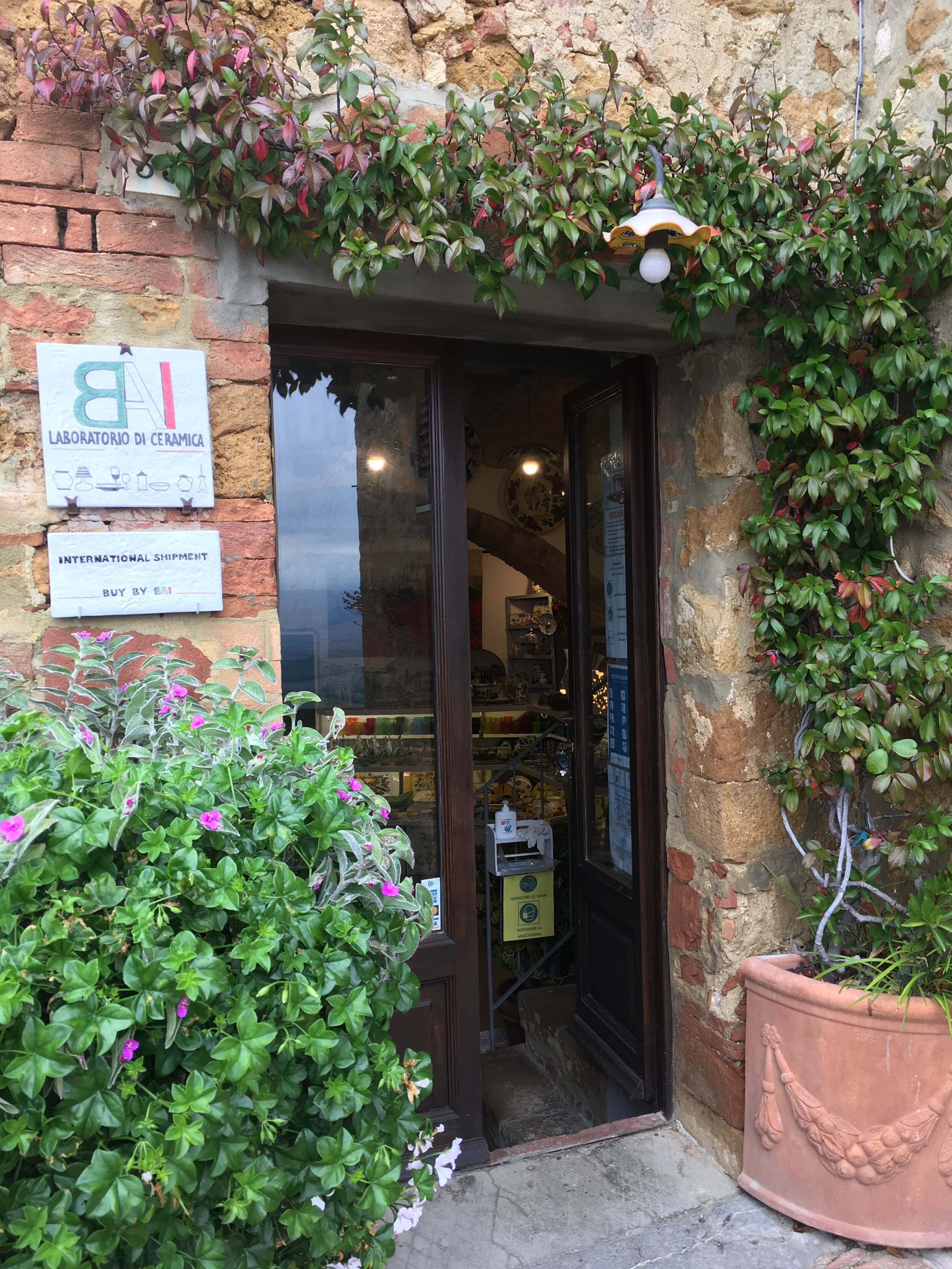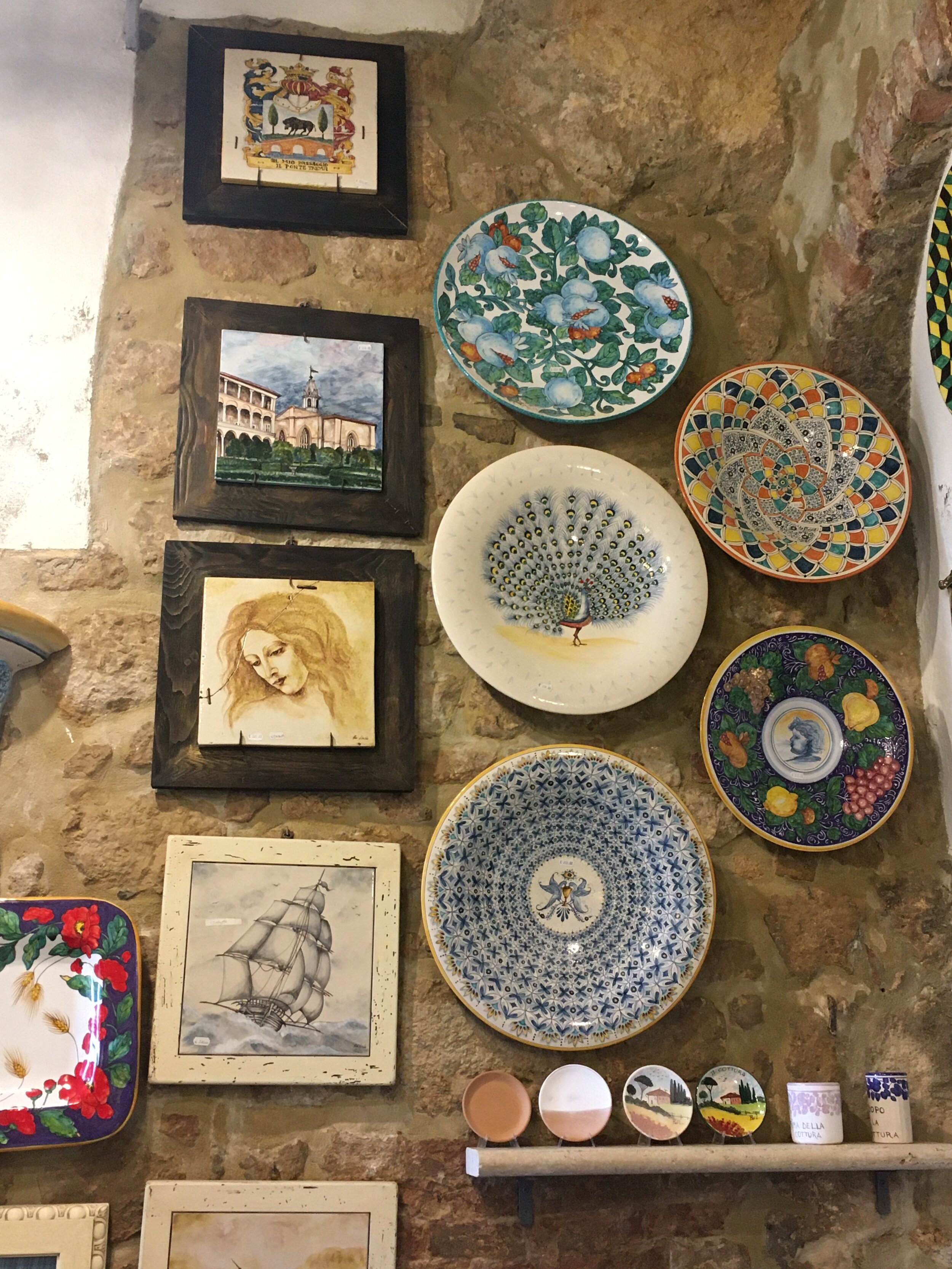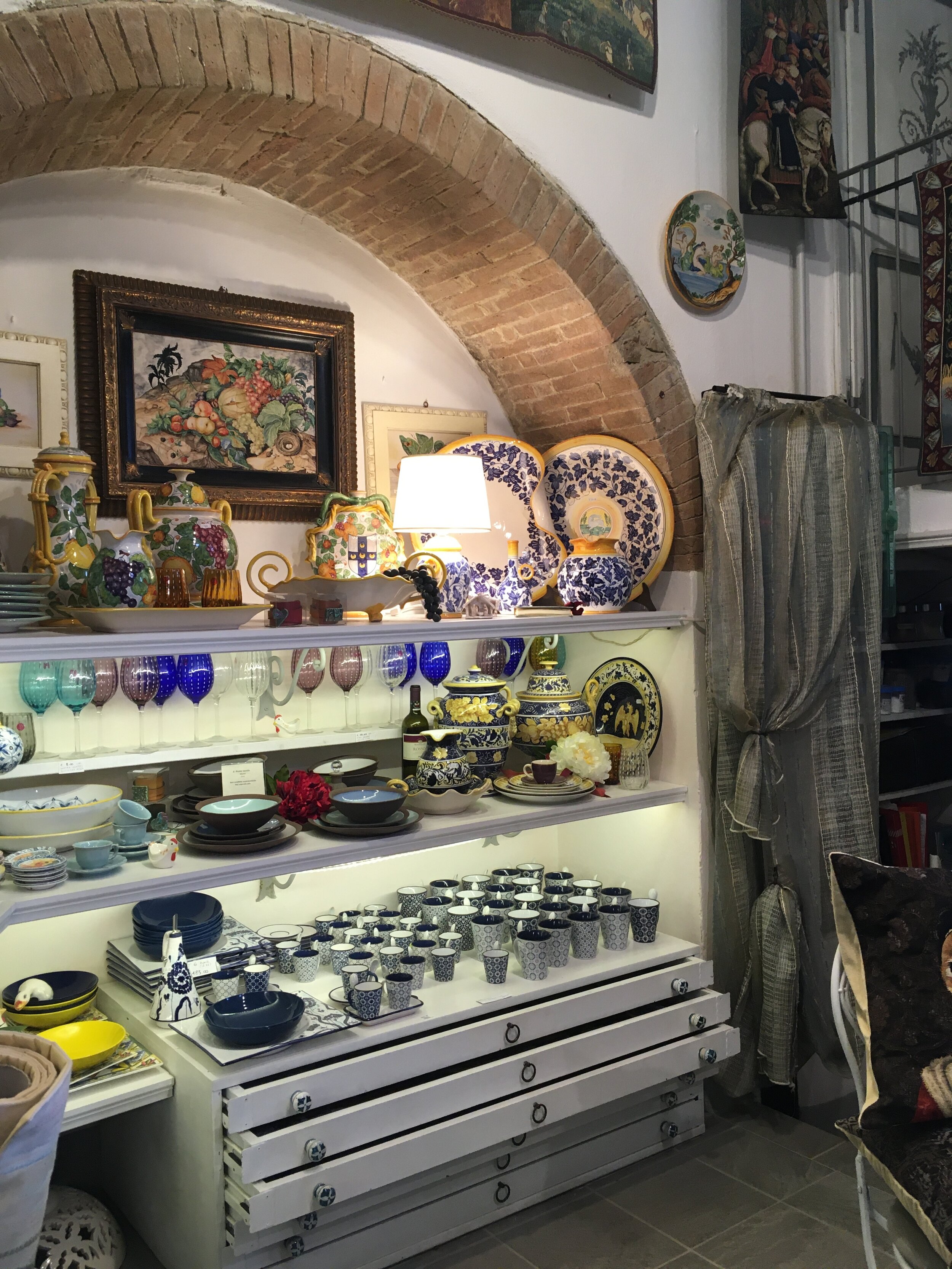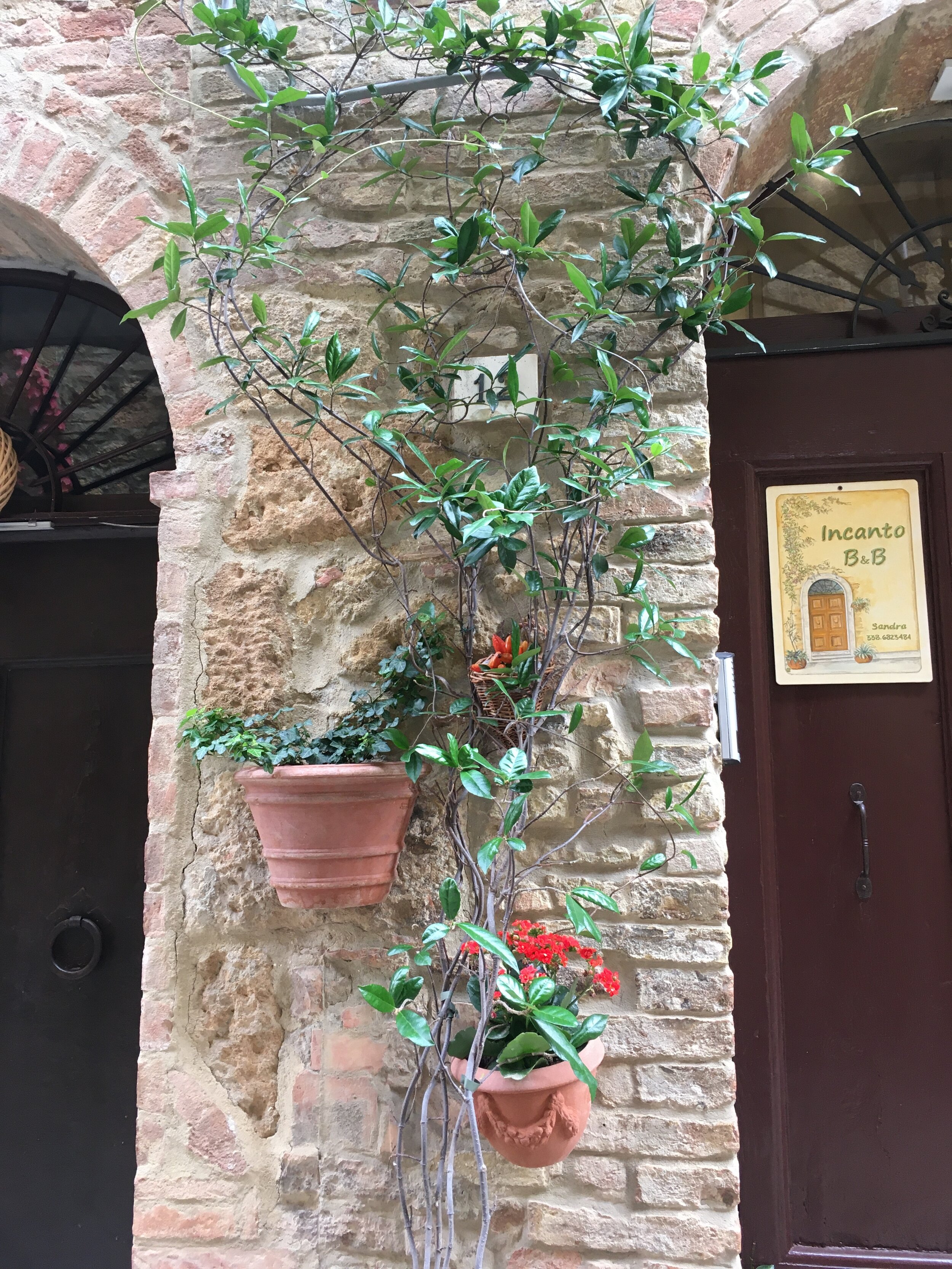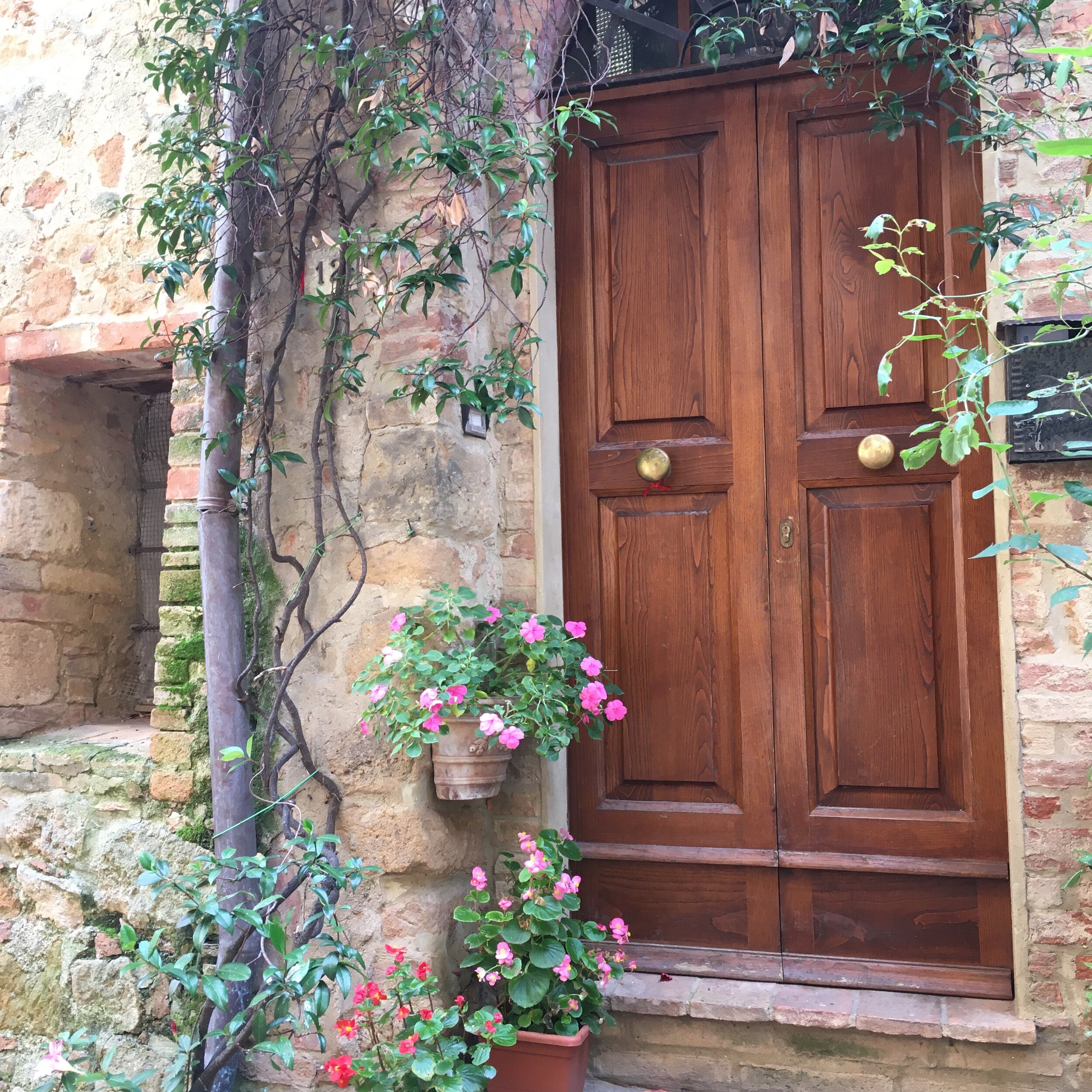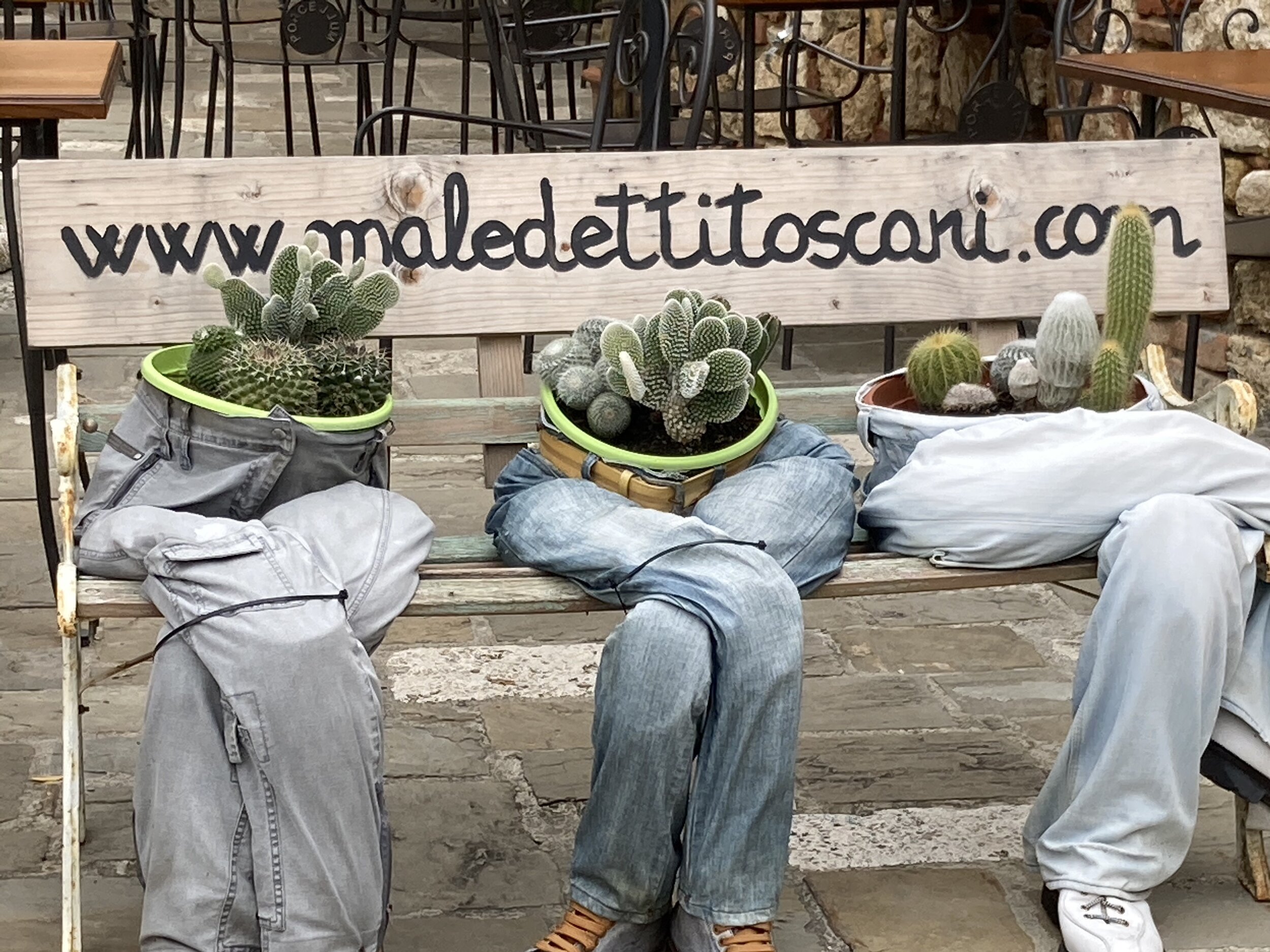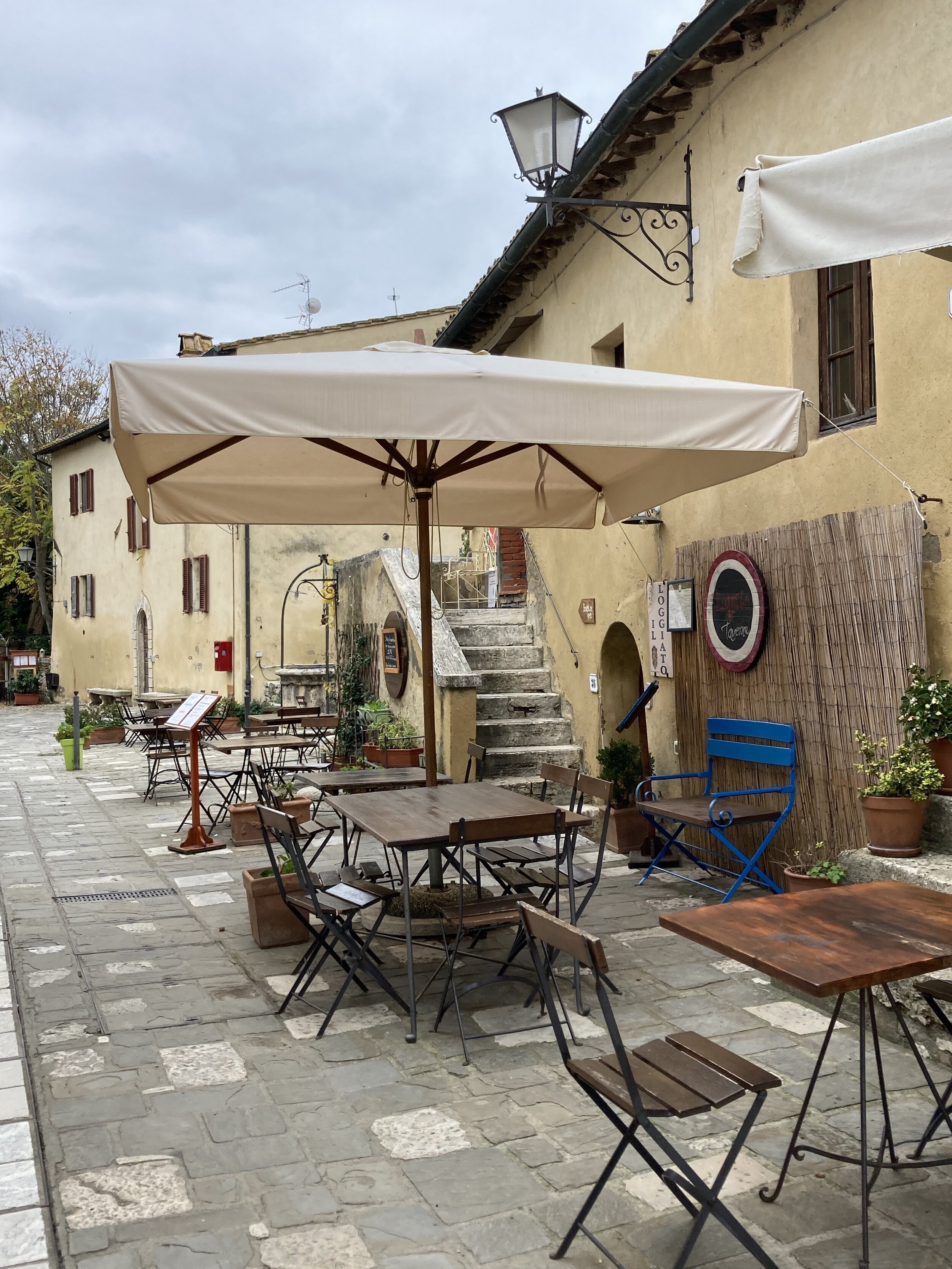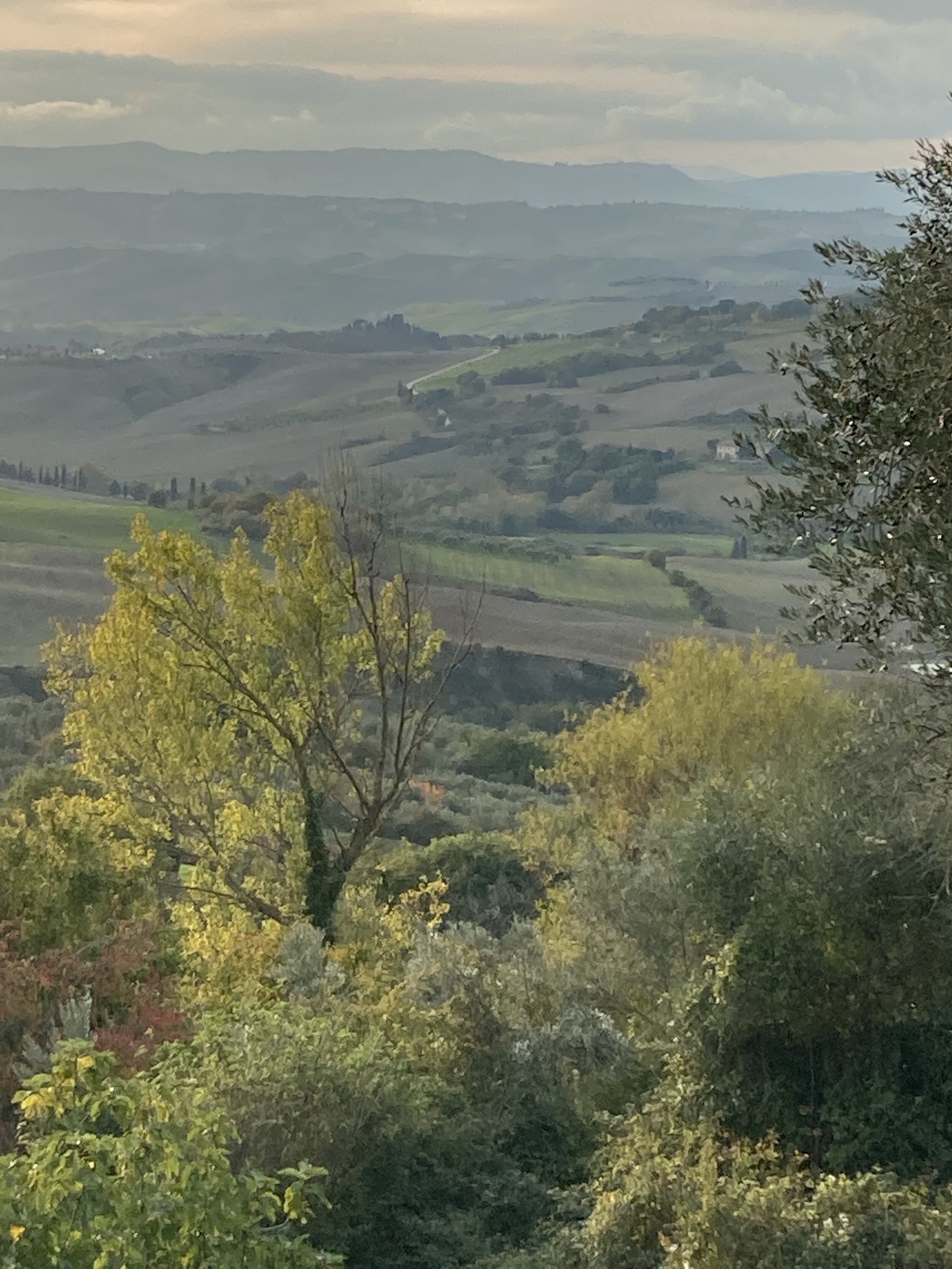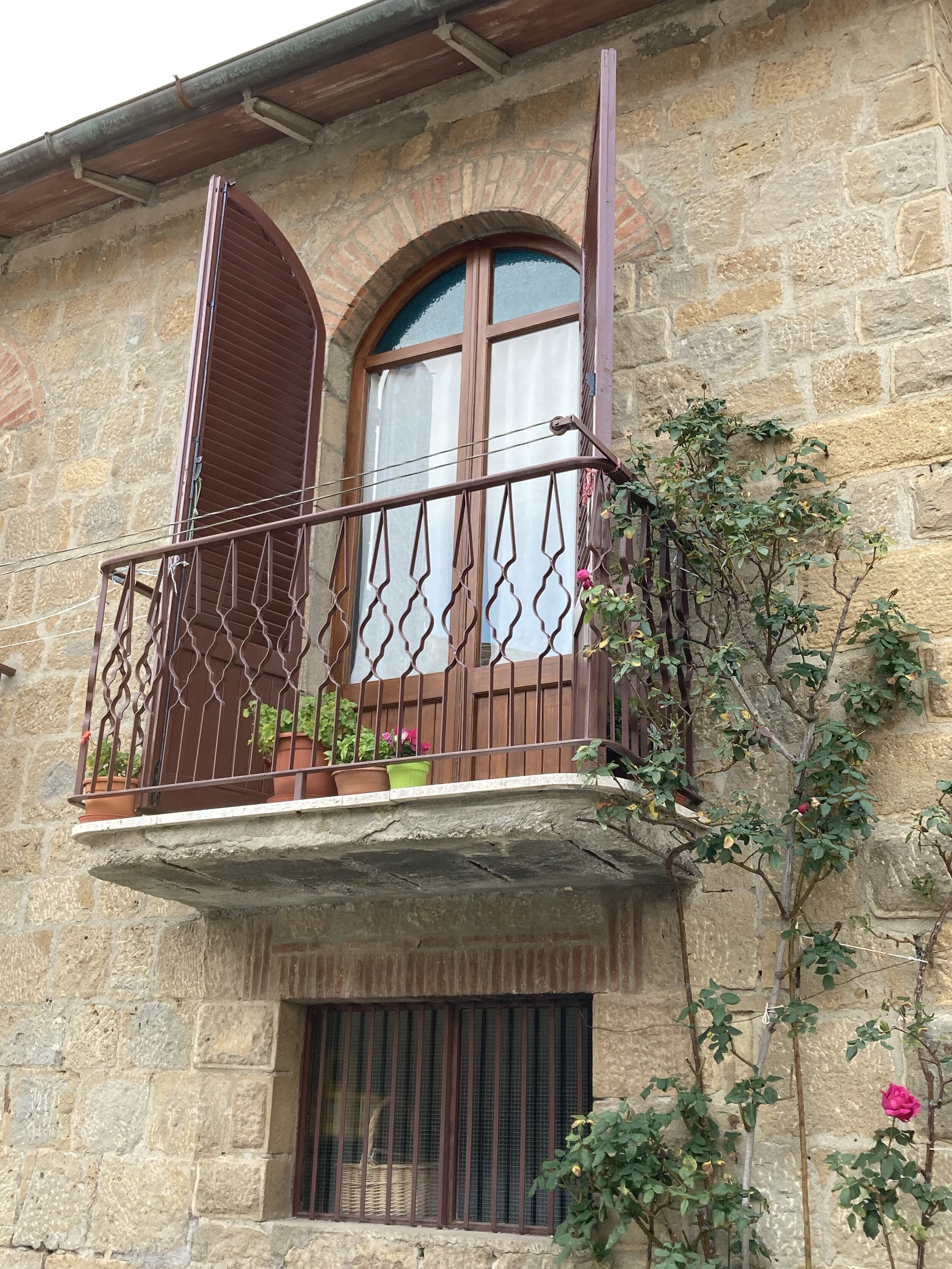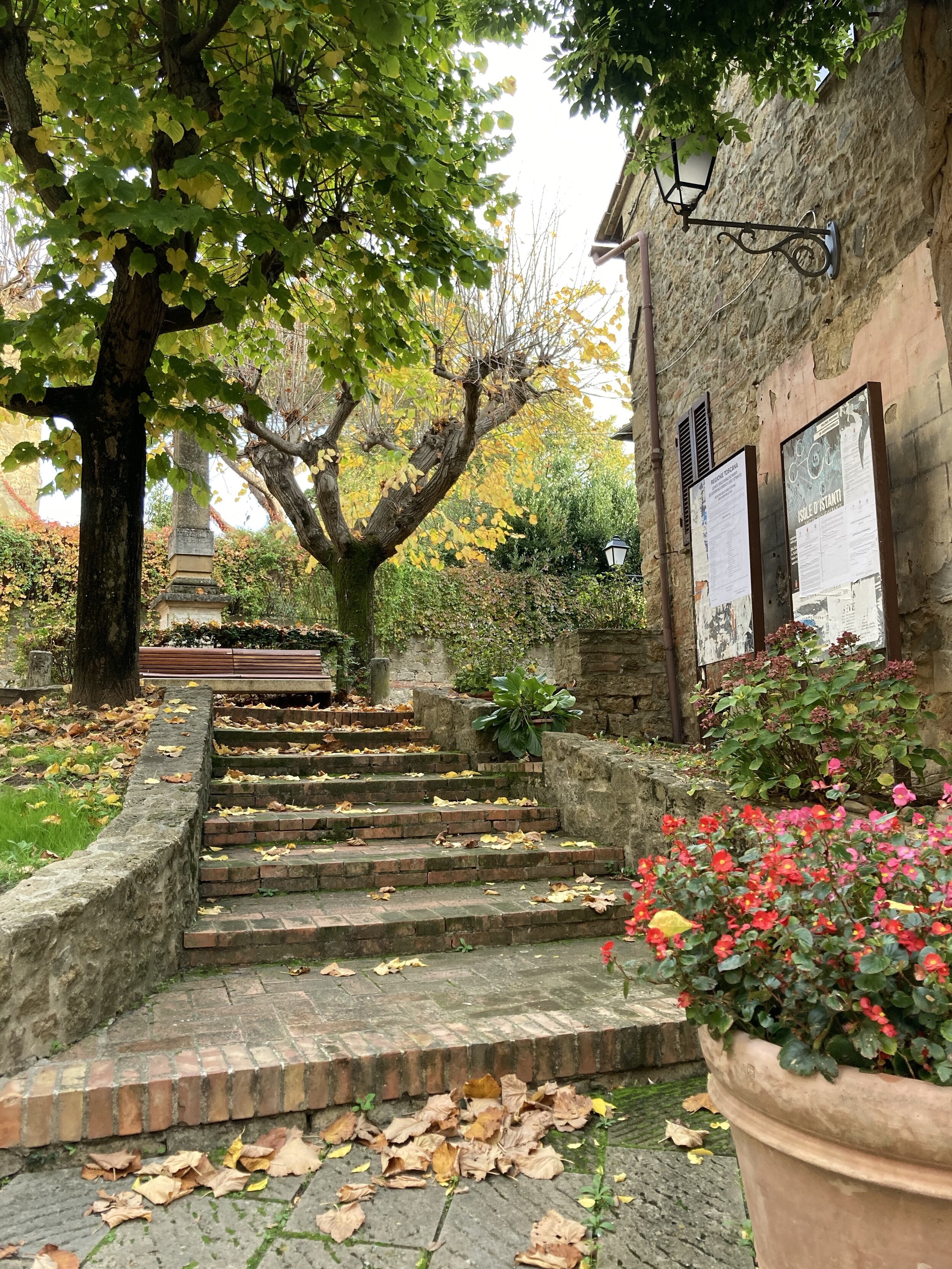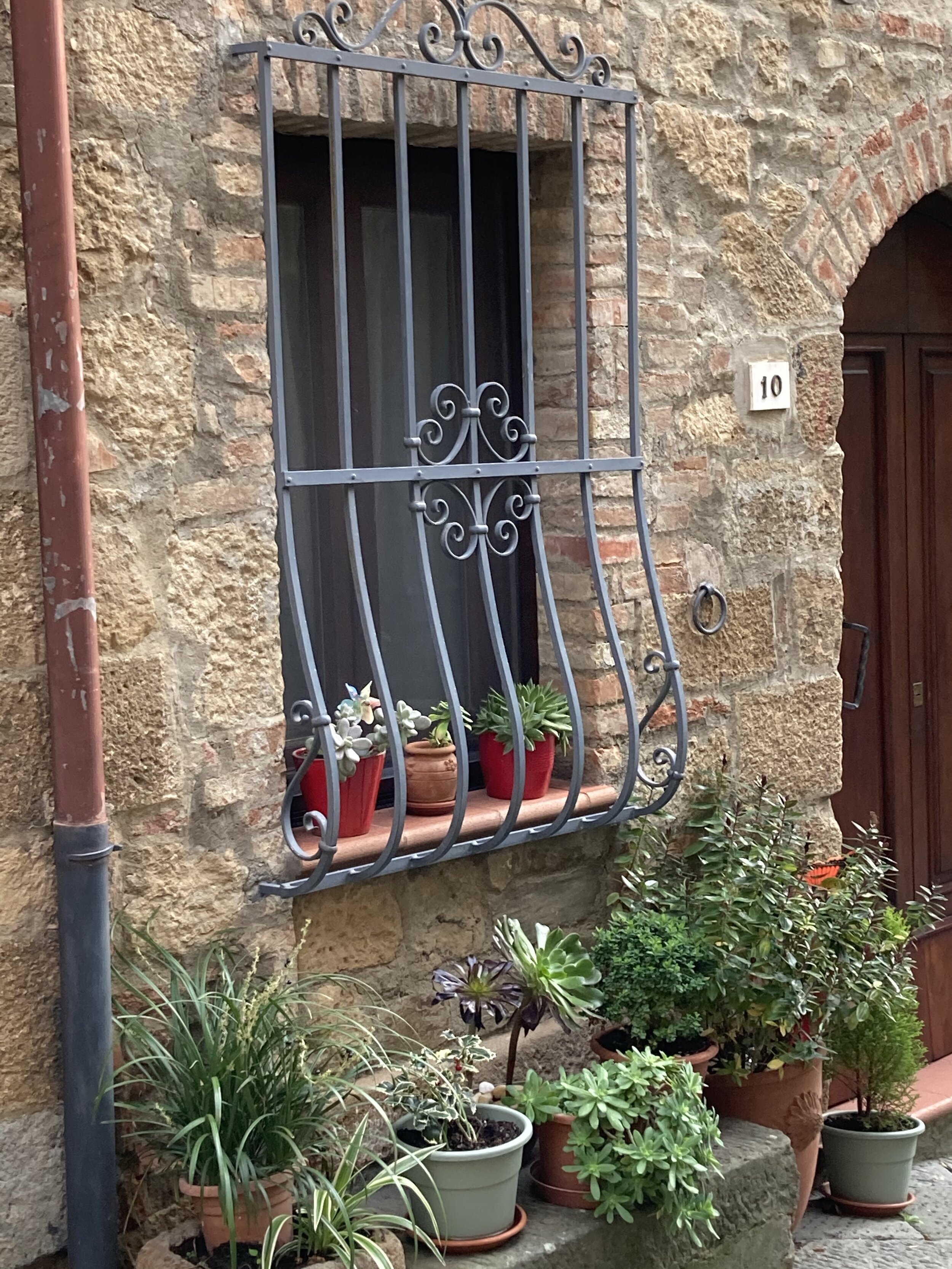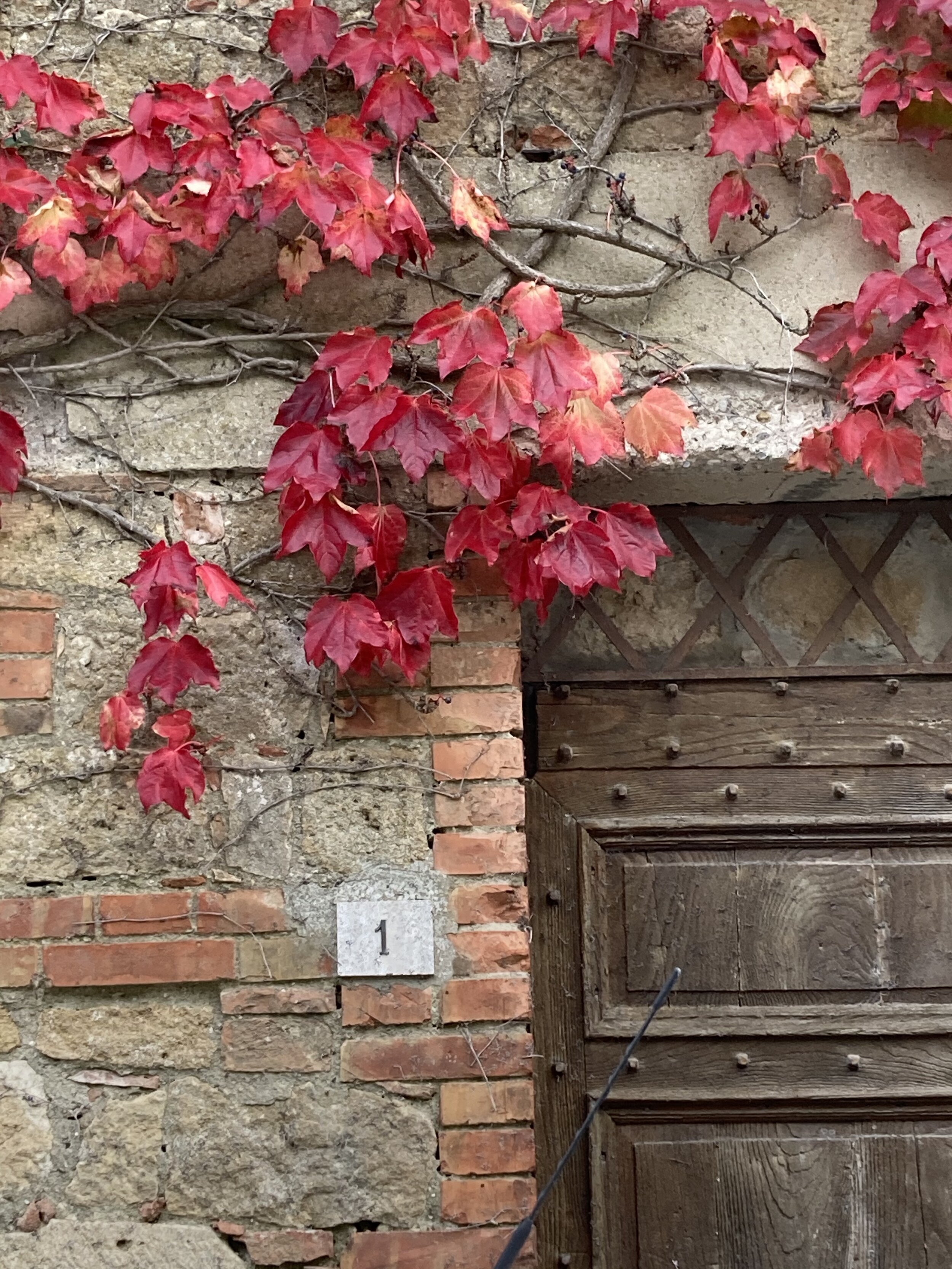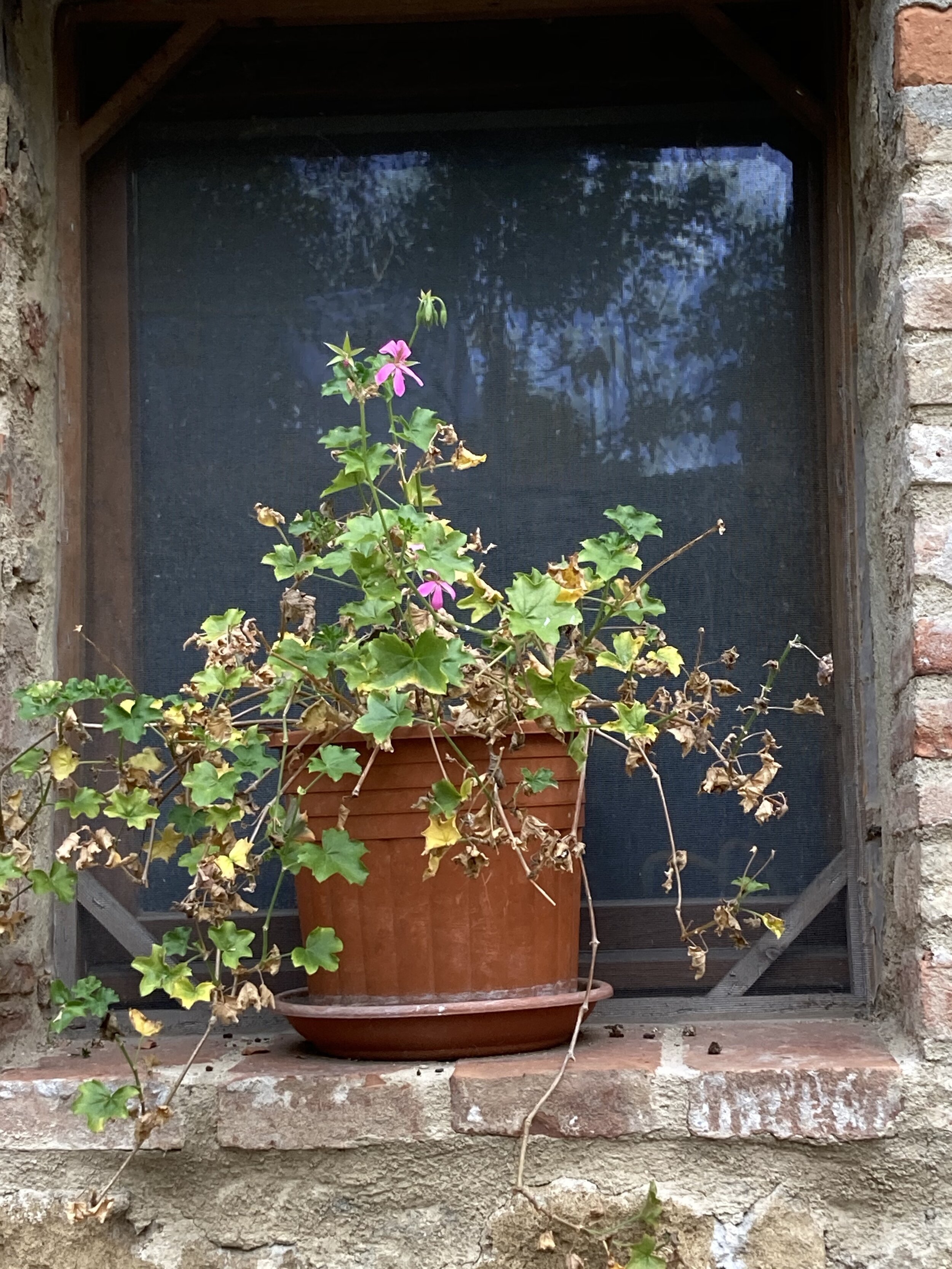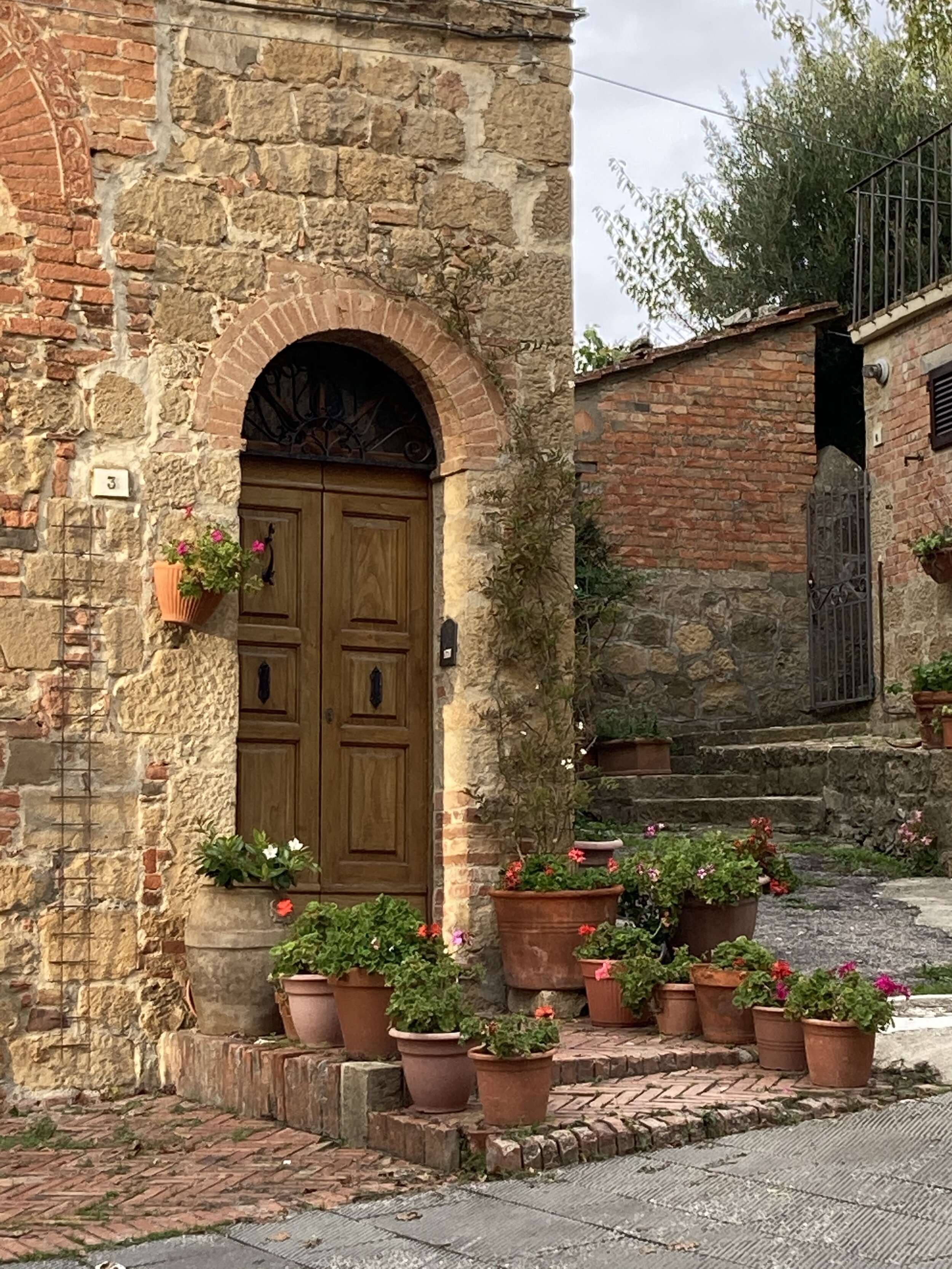Heaven and Hell in Pietrasanta
Pietrasanta has long been an artistic center in the Versilia (the coastal area of Tuscany). It is not far from the Carrara marble quarries favored by Michelangelo in the 16th century and by generations of sculptors ever since. The name itself reflects this history, Pietra = stone and Santa = sacred or holy. Marble, and the art of sculpture, is the artistic heart of this small town but sculpture is not the only art form to see in Pietrasanta. Art in all of its forms can be found here in museums, churches, galleries, studios, and in the ever-changing outdoor exhibits in piazzas and parks throughout the city.
How graceful is this outdoor sculpture ?
My last visit to Pietrasanta was just before the COVID emergency began. Now that Italy is opening up to travel again, it is one of the places I can hardly wait to revisit. My next visit is sure to include two of my favorite places – The Museo dei Bozzetti and the Church of the Misericordia (officially named the church of Sant’Antonio abate e San Biagio).
One of a group of sculpted nudes who seem to be watching and waiting in the Museo dei Bozzetti
For anyone with an interest in sculpture, the Museo dei Bozzetti is a must see. Bozzetti are small scale “rough drafts” of sculptures. The museum includes hundreds of these along with many scale models, displays demonstrating the process of creating sculptures, and stunning full-size works. Entrance is free, the museum is located just off Pietrasanta’s main square, near the Duomo. Below are some photos from my pre-COVID visits to the Bozzetti.
My second “must” is a visit to the Church of the Misericordia. This small church is easy to miss, nestled between store fronts on Via Mazzini. But once seen, it is not easily forgotten. Here the Colombian artist Fernando Botero, who has lived and worked in Pietrasanta, painted two large panels – The Gates of Paradise and the Gates of the Inferno. In typical Botero style the figures are large, round, and fleshy (he has been quoted as saying that he doesn’t paint fat people but rather paints volume). This work is clearly modern (from 1993) and not at all in the style of the ancient frescoes that are usually found in Italian churches.
Botero’s Paradise
There are vivid colors and even more vivid depictions, especially of the horrors of hell. Look closely at the details below and you’ll find some recognizable figures. Mother Teresa resides in heaven, Hitler in hell. Every time I look at these two paintings I discover something new and something thought provoking. I wonder why the artist placed his own self-portrait in the inferno panel? More of Botero’s work can be found outdoors in Pietrasanta where his super sized Roman Warrior stands in Matteotti Piazza.
Spending a day in Pietrasanta is a treat. The main square is a wonderful place to sit and have a coffee or an aperitivo, with a view of the old town walls and the Rocca di Sala fortress up the hill. The Duomo is beautiful and peaceful. Artists are often set up around town; watching them work is fun. The artists studios welcome visitors. The outdoor sculptures surprise and delight. All this is easily reachable by train from Lucca or Viareggio. Andiamo!

















